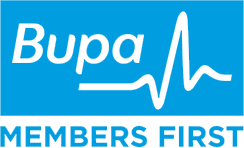Gluteal tendinopathy is literally one big pain in the BUTT that can have a big impact on mobility and quality of life.
What is it?
Gluteal tendinopathy is a painful condition that affects the tendons that join the big glute muscles in our butt to the outer or lateral part of our hip. Pain is felt on the outside of the hip, sometimes into the back of the hip and down the leg towards the knee, with activities such as walking, running, stair climbing and getting out of a chair. It is particularly painful at night to lie on as the bursa that lies deep to the tendon becomes inflamed and is painful when it is compressed. Gluteal tendinopathy can cause severe pain and limit your ability to walk, put weight on your leg, and sleep.
How Common is Gluteal tendinopathy and why does it happen?
- It is the most common tendon issue in the lower limbs
- It affects ONE IN FOUR women over 50 and is 4 more times common in women.
- Gluteal tendinopathy is often associated with arthritic changes in the hip and knee.
- The cause can normally relate to a recent increase in activity. It is commonly reported to start after a holiday where more walking is done or an increase in time walking up and down hills or stairs or on uneven terrain. A sharp increase in running distance or speed may be the culprit. Sometimes prolonged bed rest can irritate the glute tendons and underlying bursa due to sustained periods of compression.
Diagnosis
An examination of the hip will commonly find reduced pain with specific hip movements which stretch the muscle, pain on prolonged standing on the affected leg, weakness and pain when the muscle is tested and local tenderness. Diagnosis can be confirmed with ultrasound. An MRI will clearly show the condition. X-rays are useful to exclude hip joint disease.
Treatment
- Physio
In a recent Queensland trial (LEAP trial), education and a progressive exercise program showed an 80% improvement in pain, improved ability to participate in activities that previously caused pain and a reduction in the frequency of the pain. This was shown to be better than wait and see or local cortisone injection. Learning how to reduce the load on the tendons early on, can make a big impact on how quickly you recover.
So physio is a great place to start to get the right advice and exercises.
- Medicines
Paracetamol, analgesic rubs like Voltaren gel and anti-inflammatory tablets may provide relief.
- Injections:
Cortisone Injections: These can be useful to settle the acute pain particularly of bursitis but do not provide long term pain relief. They are useful to settle symptoms so that you can start a specific exercise program
PRP (Platelet Rich Plasma) injections- these involve taking a sample of your own blood and spinning the sample to use the platelets. Recent studies show promising results but long term benefits are uncertain.
- Surgery: Surgery is an option if all attempts at exercise have failed. The trochanteric bursa is removed and the glute tendon is repaired. However the results of surgery are variable. Pain is usually improved but muscle strength may not return.
Take home tips to manage Lateral Hip Pain
- Avoid crossing your legs as this stretches the glute tendon and compresses the bursa.
- Sleep on the unaffected side with a pillow between your knees to keep the top knee level with the hip. Or sleep on your back. This will avoid compression of the bursa.
- Walk on flat surfaces rather than on slopes and inclines until the hip settles.
- The use of a walking stick on the opposite side of your sore hip can make walking much more comfortable and is an easy way to unload the tendons whilst you work on your exercises.
- Get help early to avoid long-term chronic problems.







Make an Appointment
COMPLEXICA BUILDING Level 1, 9 Charles St
West Lakes 5021
Call Us08 8347 2043